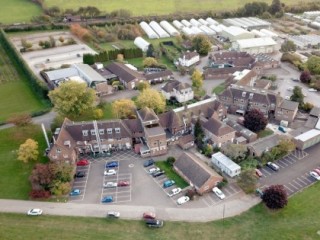
The history of fruit research at East Malling began with the East Malling and Wye Fruit Experimental Station which was established on the East Malling site in 1913 with the support of local fruit growers. In fact, the original building is still in use today as part of the East Malling Enterprise Centre.
NIAB East Malling originally became an independent research institute in 1920 under the name Kent Incorporated Society for Promoting Experiments in Horticulture, afterwards becoming known as the East Malling Research Station (EMRS) for the next 65 years. In the 1970s with the close integration of horticultural research in England, EMRS became the AFRC Institute of Horticultural Research (IHR) - East Malling.
The IHR governing body was responsible for research stations around the UK at East Malling, Littlehampton, Wellesbourne and the Hop Research Department at Wye College. In 1990, Horticulture Research International was established from a merger between the Institute of Horticultural Research and the Agricultural Development Advisory Service (ADAS) Experimental Horticulture stations at Efford, Kirton and Stockbridge House. HRI was sponsored by Defra as a Non-Departmental Public Body (NDPB). The arrangement was dissolved on 1st April 2004 when East Malling Research became an independent company again.
The first Director, R. Wellington, defined the task of the Station on its foundation as the “the study of problems met with in the actual culture of fruit trees and bushes.” Wellington left for war service and Dr R.G. Hatton took charge of the station in 1914 and devoted his research to developing Wellington’s programme.
Over the years, some of the finest and most important research on perennial crops has been conducted on the site resulting in East Malling’s world-wide reputation. Some of the more widely adopted developments have been achieved in the areas of fruit plant culture (especially the development of rootstocks), agronomy, fruit breeding, post-harvest storage and the biology and control of pests and diseases.
Today, science and research at East Malling is applied to a much wider range of crops than fruit trees and bushes, and includes mushrooms, tomatoes, bulbs, herbs and ornamental shrubs.
In February 2016, NIAB EMR was established as a wholly owned subsidiary of NIAB and continues to operate from its existing site at East Malling in Kent.
